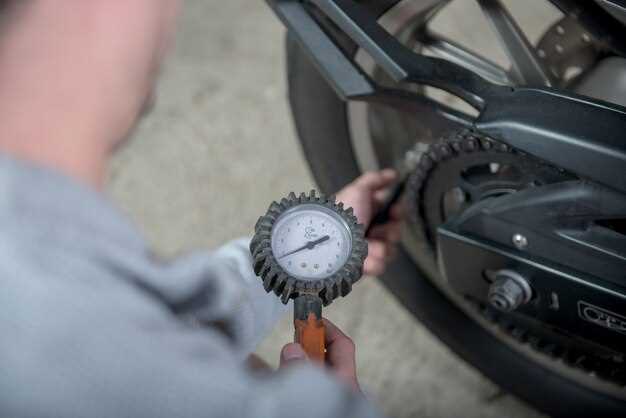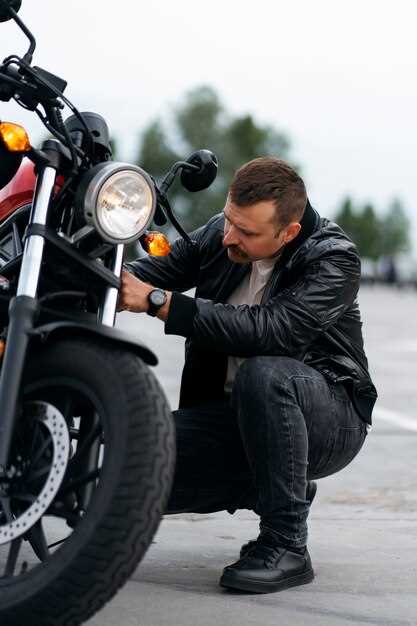
Motorcycle overheating is a critical issue that can lead to severe engine damage if not addressed promptly and effectively. Riders may notice symptoms such as steam rising from the engine or a sudden drop in performance, which often indicate a problem with the cooling system. Understanding the underlying causes of overheating is essential for ensuring the longevity and reliability of your motorcycle.
One of the primary factors contributing to overheating is inadequate coolant levels. Coolant plays a vital role in regulating engine temperature, absorbing heat, and preventing overheating. If the coolant is low, it can result in insufficient heat dissipation, leading to increased engine temperatures. Regular checks of coolant levels and clarity are crucial for maintaining optimal engine performance.
In addition to low coolant levels, a malfunctioning radiator or thermostat can further exacerbate overheating issues. A blocked radiator can restrict airflow, hindering the cooling process, while a faulty thermostat may fail to open, preventing the circulation of coolant. Identifying these problems early on allows riders to implement necessary solutions, such as flushing the cooling system or replacing defective components, ultimately ensuring a smoother and safer riding experience.
Identifying Symptoms of Coolant Leaks in Motorcycles
Motorcycle overheating can often be traced back to coolant leaks, which, if not addressed promptly, can lead to severe engine damage. Recognizing the symptoms of coolant leaks is essential for maintaining your bike’s performance and safety. Here are some key indicators to watch for.
1. Visible Coolant Puddles: One of the most obvious signs of a coolant leak is finding puddles or spots of coolant under the bike. This liquid can be bright green, orange, or pink, depending on the type of coolant used. If you notice any strange liquid pooling beneath your motorcycle, it’s critical to investigate further.
2. Low Coolant Levels: Regular checks of your coolant reservoir are vital. If you find that your coolant levels are consistently low without any recent refill, this may indicate a leak. Insufficient coolant can lead to overheating, as the engine will not have adequate liquid to dissipate heat.
3. Overheating Engine: If your motorcycle’s temperature gauge rises unexpectedly, it is a clear signal that there may be a coolant leak. An engine running above its normal temperature range can lead to major mechanical issues if not resolved swiftly.
4. Steam or Vapor: Observing steam or vapor emanating from the engine or coolant reservoir during operation can signify that coolant is escaping from the system. This symptom often occurs when the leak is substantial enough to expose the hot engine components to the liquid.
5. Sweet Smell: The sweet smell of coolant can be a telltale sign of a leak. If you detect this odor while riding or after stopping, it’s prudent to conduct a thorough check of your coolant system.
6. Corrosion or Residue: Look for signs of corrosion or crusty residue around hoses, clamps, or the radiator. These indications suggest the presence of coolant that has leaked and evaporated, leading to potential blockages and further overheating issues.
7. Engine Warning Light: Many modern motorcycles come equipped with engine temperature warning lights. If this light activates, it is advisable to stop riding immediately and check for coolant issues, as a leak could lead to further complications.
In conclusion, being vigilant about these symptoms is vital in identifying coolant leaks in your motorcycle. Timely diagnosis and action will not only prevent overheating but also extend the life of your engine.
Evaluating Radiator Performance and Airflow Issues

Diagnosing overheating issues in motorcycles often involves a thorough evaluation of the radiator’s performance and airflow. The radiator plays a critical role in maintaining optimal coolant temperatures; thus, any inefficiency can lead to overheating.
First, inspect the radiator for any physical damage such as dents or leaks. A compromised radiator cannot effectively dissipate heat, leading to higher coolant temperatures. Additionally, check for corrosion which can impede the radiator’s ability to transfer heat.
Next, evaluate the condition of the coolant. Over time, coolant can become contaminated with rust and debris, reducing its efficiency. Ensure the coolant is at the appropriate level and is free from impurities. If necessary, flush and replace the coolant to improve heat exchange capacity.
Airflow is another crucial factor in radiator performance. Blocked or restricted airflow can severely impact the radiator’s ability to cool the coolant. Inspect the surrounding area for obstructions, such as dirt, mud, or debris. A clean radiator surface allows for better heat dissipation.
In addition to external cleaning, check the radiator fans. If the fans are not operating correctly, they will fail to draw adequate air through the radiator, leading to overheating. Test fan functionality by observing whether they engage at the appropriate temperature and maintaining consistent operation.
The positioning of the motorcycle also affects airflow. Ensure the bike is not placed in a way that restricts airflow to the radiator, especially when stationary. If issues continue, consider adjusting the bike’s placement or routing for improved air intake.
Regular maintenance of all components related to the cooling system, including the radiator, hoses, and thermostat, is essential. By ensuring all these aspects are functioning correctly, you can prevent overheating issues and prolong the life of your motorcycle.
Troubleshooting Thermostat and Water Pump Malfunctions

The motorcycle’s cooling system plays a critical role in maintaining optimal engine temperatures. Two key components of this system are the thermostat and the water pump. Troubleshooting issues with these parts requires a systematic approach to ensure effective cooling and prevent overheating.
1. Thermostat Issues
The thermostat regulates the flow of coolant between the engine and the radiator. A malfunctioning thermostat can lead to either overheating or underheating. If the engine is running too hot, the thermostat may be stuck closed, preventing coolant from circulating. Check for signs such as engine temperature spikes or a sealed thermostat housing. In contrast, if the engine remains cool for an extended period, the thermostat might be stuck open, allowing coolant to flow continuously, which results in poor engine performance.
2. Checking the Thermostat
To diagnose thermostat issues, begin by visually inspecting the component for any physical damage or corrosion. You can also test it by removing the thermostat and placing it in hot water. A functional thermostat should open at its rated temperature. If it fails to open, replacement is necessary.
3. Water Pump Malfunctions
The water pump is responsible for circulating coolant throughout the engine and radiator. Common issues include leaks, unusual noises, and decreased coolant flow. A leaking water pump can often be identified by a visual inspection for coolant puddles underneath the bike. Conversely, a failing pump may produce a grinding noise or vibrations, indicating wear on the internal components.
4. Testing the Water Pump
To confirm water pump functionality, check for proper coolant flow through the radiator when the engine is running. If the coolant does not circulate adequately, inspect the pump for obstructions or damage. Ensure the drive belt or chain, if applicable, is in good condition and that the pump is securely mounted.
5. Conclusion
By methodically assessing the thermostat and water pump, motorcycle owners can identify and resolve cooling system issues effectively. Regular maintenance and prompt attention to any symptoms can significantly extend engine life and performance.
